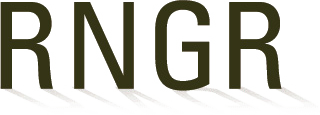
Amelanchier (alnifolia)
|
Mark E. Majerus USDA NRCS - Bridger Plant Materials Center 99 South River Road, Rte. 2, Box 1189 Bridger, Montana 59014-9718 (406) 662-3579 (406) 662-3428 (fax) mmajerus@mt.nrcs.usda.gov http://plant-materials.nrcs.usda.gov/mtpmc |
|
| Family Scientific Name: | Rosaceae | ||
|---|---|---|---|
| Family Common Name: | Rose Family | ||
| Scientific Name: | Amelanchier alnifolia (Nutt.) Nutt.ex M. Roemer | ||
| Common Name: | Saskatoon serviceberry | ||
| Species Code: | AMEAL N | ||
| Ecotype: | Numerous Glacier National Park ecotypes including NRCS accession numbers 9058333 (St. Mary Ranger Station), 9063637 (Quarter Circle Bridge), 9075852 (St. Mary Falls Horse Ramp), 9063634 (West Glacier), 9075853 (Rising Sun), and 9075854 (Bowman Lake Road). | ||
| Propagation Goal: | plants | ||
| Propagation Method: | seed | ||
| ProductType: | Bareroot (field grown) | ||
| Stock Type: | 2+0 | ||
| Time To Grow: | 2 Years | ||
| Propagule Processing: | Fruit cleans well in a DybvigT macerator. After maceration, float off light seed and debris with repeated rinsing in a bucket. Spread seed on kraft paper in a warm dry location for 24 to 48 hours. Minimal cleaning over a fanning mill may be needed to remove fine debris. Certain lots and collections have a high percentage of poorly filled or deformed seed so it may be necessary to over collect to meet target production. | ||
| Pre-Planting Treatments: | Fall field sowing of fresh seed usually results in good germination (~50%) the next spring, although small amounts of additional germination may occur the second spring. | ||
| Growing Area Preparation/ Annual Practices for Perennial Crops: |
Rototill the seedbed to break up clods and level the site. Soil moisture needs to be such that rototilling leaves behind a fine, fluffy seedbed. Lightly firm the seedbed with a roller or packer prior to sowing if the soil surface is too soft. Sow 25 to 50 seeds per linear foot to a depth of 0.25 to 0.5 inches. We maintain 4-ft wide beds (5-ft between beds), and plant 3 to 4 rows of seeds per bed depending on production interval. We cover our seeds with excelsior to maintain soil moisture and minimize animal predation. We fall sow fresh serviceberry in October or November. Germination occurs the following spring. | ||
| Harvesting, Storage and Shipping: |
Bareroot: We harvest 2-0 or 3-0 bareroot plants as soon as the ground thaws in early spring. A "U" blade mounted to a 3-point system on the back of a tractor is used. Beds are undercut in two directions (up and down their length) prior to using the blade to lift the plants. Bundles of 10 to 25 plants are tied together, trimmed to a uniform size, then the roots packed in moist sphagnum or peat moss wrapped in plastic. The plants are stored in a walk-in cooler maintained at 34 to 37øF and 80+% relative humidity until needed and then shipped in heavy wax coated boxes as priority ground mail early in the week. Length of Storage: Dormant bareroot plants store well for several weeks in a 34 to 37øF cooler. |
||
| Other Comments: | This species is relatively easy to propagate from seeds. We have experienced root diseases on field plants grown on heavy textured soils in wet years. | ||
Citation:
Scianna, Joe. 2003. Propagation protocol for production of Bareroot (field grown) Amelanchier alnifolia (Nutt.) Nutt.ex M. Roemer plants 2+0; USDA NRCS - Bridger Plant Materials Center Bridger, Montana. In: Native Plant Network. URL: https://NativePlantNetwork.org (accessed 2025/11/04). US Department of Agriculture, Forest Service, National Center for Reforestation, Nurseries, and Genetic Resources.



